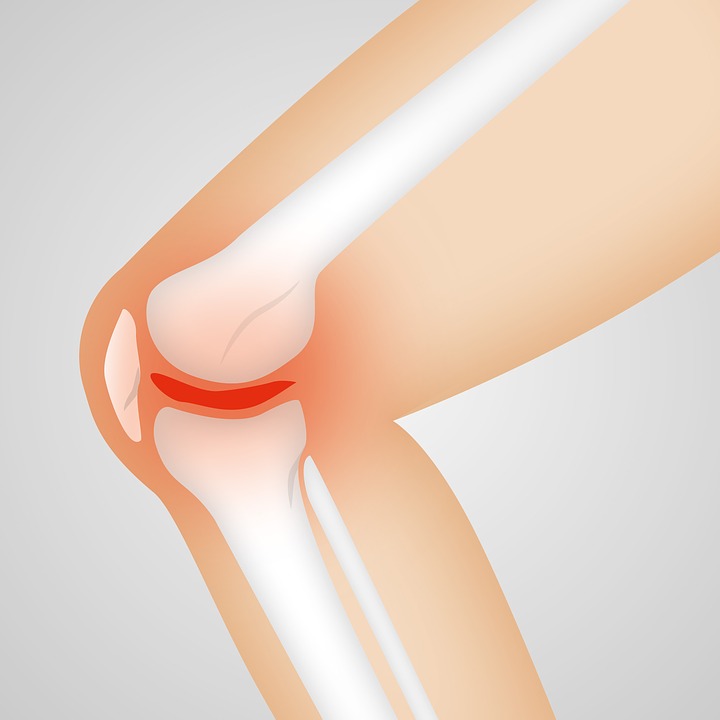
Understanding Knee Pain When Temperatures Drop: Unraveling the Cold Weather Connection
As the temperature drops and winter sets in, many individuals find themselves grappling with a common yet perplexing issue – knee pain. It’s not uncommon for people to experience an increase in knee discomfort during colder months, leaving them wondering about the connection between dropping temperatures and joint pain.
Here we delve into the reasons behind knee pain when the mercury falls and explore strategies to manage and alleviate this seasonal discomfort.
The Cold Weather and Joint Pain Link
Various factors contribute to the onset or exacerbation of knee pain during colder weather. While the scientific community is still investigating the precise mechanisms, several theories shed light on the possible connections.
- Barometric Pressure Changes: It’s believed that changes in barometric pressure, which often accompany shifts in weather patterns, can influence joint pain. As temperatures drop, barometric pressure tends to decrease. This alteration may affect the expansion and contraction of tissues in and around the knee joint, leading to pain and discomfort.
- Blood Flow and Circulation: Cold weather can cause blood vessels to constrict, reducing blood flow to certain areas of the body, including the joints. Limited blood supply can result in stiffness and increased sensitivity to pain, especially in individuals already prone to joint issues.
- Muscle Contraction and Tension: Cold temperatures can cause muscles to contract, leading to increased tension around the knee joint. This muscle tightness can contribute to joint stiffness and pain, particularly for those with existing musculoskeletal conditions.
- Synovial Fluid Changes: The synovial fluid in the joints, which provides lubrication and nourishment to the cartilage, may be influenced by colder temperatures. Thicker synovial fluid can impede joint movement and contribute to discomfort.
Managing Knee Pain in Cold Weather
While it may be challenging to eliminate knee pain associated with cold weather, several strategies can help manage and alleviate symptoms:
- Stay Warm: Dressing warmly, especially around the knees, can help maintain the joint’s temperature. Wearing knee sleeves or thermal leggings can provide additional insulation and support.
- Regular Exercise: Engaging in low-impact exercises, such as swimming, walking, or cycling, helps maintain joint flexibility and strengthens the surrounding muscles. Warm-up exercises before physical activity are crucial in colder weather.
- Maintain a Healthy Weight: Excess body weight puts additional stress on the knees. Maintaining a healthy weight through a balanced diet and regular exercise can alleviate pressure on the joints.
- Stay Hydrated: Hydration is essential for joint health. Drinking an adequate amount of water helps maintain the synovial fluid’s viscosity, ensuring proper lubrication of the joints.
- Heat Therapy: Applying heat to the affected knee can help relax muscles, increase blood flow, and reduce stiffness. Hot packs, warm baths, or heat patches can be effective.
- Consult a Healthcare Professional: If knee pain persists or worsens, seeking advice from a healthcare professional is crucial. They can provide a proper diagnosis, recommend targeted treatments, and offer personalized advice based on the individual’s health status.
Conclusion
While the link between knee pain and cold weather is not entirely understood, it’s clear that various factors play a role in exacerbating discomfort during winter months. By adopting lifestyle changes, staying physically active, and seeking professional guidance when necessary, individuals can effectively manage knee pain and enjoy a more comfortable and active life, regardless of the weather.
Further Reading
- Why Does My Knee Hurt When It’s Cold? | 3 Potential Causes (kneeforce.com)
- What Causes Knee Pain in Cold Weather? (webmd.com)
- Knee pain – NHS (www.nhs.uk)
- Cold Knees: Symptom of a Condition? (healthline.com)
- How (And Why) Cold Weather Affects Your Knees | Central Orthopedic (centralorthopedicgroup.com)
Knee pain Joint pain, Knee arthritis Osteoarthritis, Rheumatoid arthritis, Knee injury, Ligament injury, Meniscus tear, Patellofemoral pain syndrome, Runner’s knee, Osteoporosis, Bursitis Gout, Tendonitis Patellar tendinitis, Knee swelling, Knee stiffness, Cartilage damage, Knee instability, Chondromalacia patellar, Knee osteophytes, Baker’s cystIliotibial band syndrome (ITBS), Patellar dislocation, Knee surgery, Total knee replacement, ACL (Anterior Cruciate Ligament) injury, PCL (Posterior Cruciate Ligament) injury, MCL (Medial Collateral Ligament) injury, LCL (Lateral Collateral Ligament) injury, Knee effusion, Synovitis Patellar tracking disorder, Knee biomechanics Quadriceps weakness, Hamstring tightness, Patellar instability, Knee rehabilitation, Knee exercises, Knee braces,
#kneeinjury #kneeswelling #kneepain #kneestiffness #kneebraces #cartilagedamage, #kneeinstability
ADVERTISEMENTS
UK Online Doctors
Online Therapist For UK & Abroad!

Renata The Owner & Editor of DisabledEntrepreneur.uk and DisabilityUK.co.uk Online Journals, suffers From OCD, Cerebellar Atrophy & Rheumatoid Arthritis. She is an Entrepreneur & Published Author, she writes content on a range of topics, including politics, current affairs, health and business. She is an advocate for Mental Health, Human Rights & Disability Discrimination.
Whilst her disabilities can be challenging she has adapted her life around her health and documents her journey online.
Disabled Entrepreneur - Disability UK Online Journal Offers Digital Marketing, Content Writing, Website Creation, SEO, and Domain Brokering. Disabled Entrepreneur - Disability UK is an open platform that invites contributors to write articles and serves as a dynamic marketplace where a diverse range of talents and offerings can converge. This platform acts as a collaborative space where individuals or businesses can share their expertise, creativity, and products with a broader audience.












